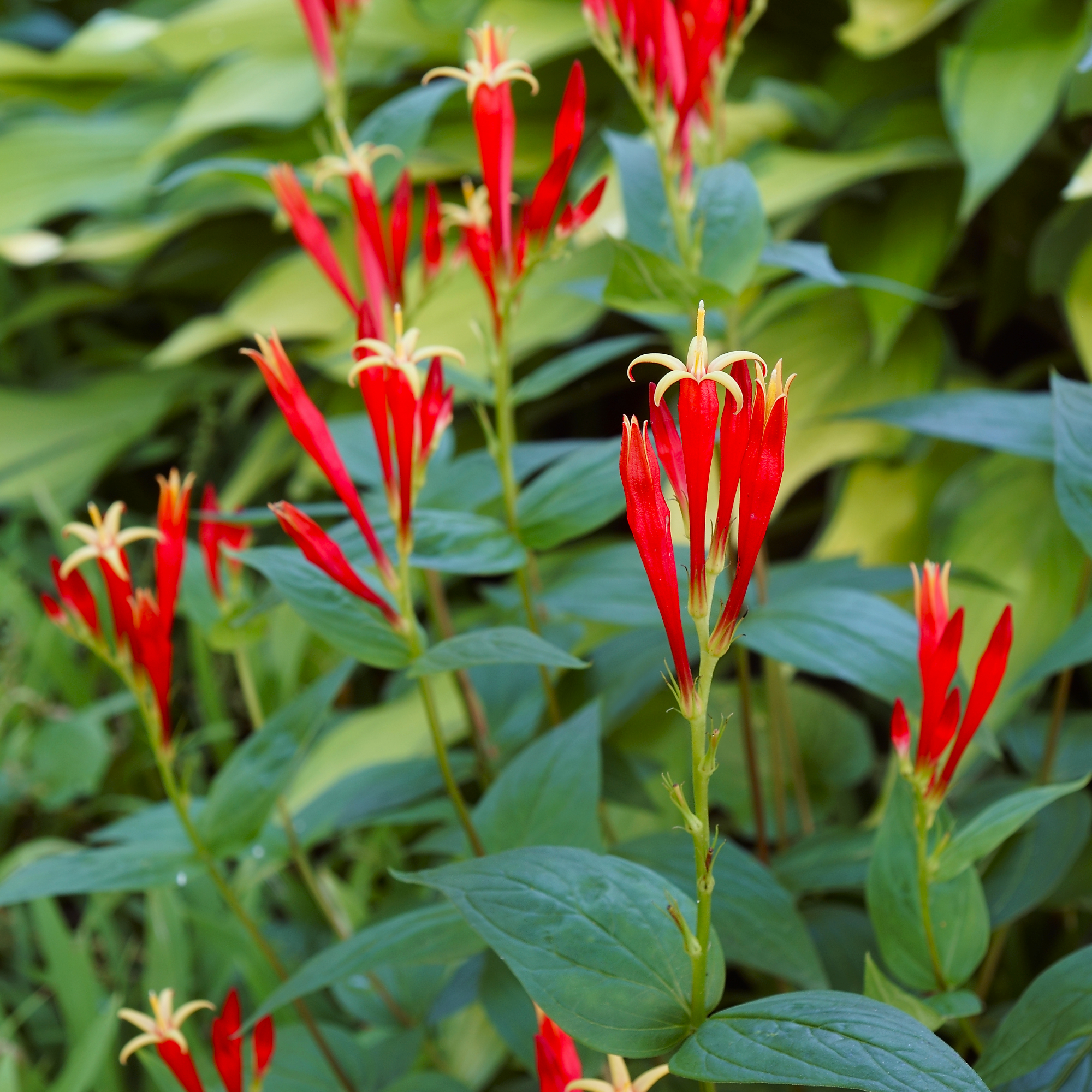How To Grow Indian Pink – A Little-Known Native Plant Hummingbirds Can’t Resist!
Indian pink is easy to grow and adds tropical flair to any garden! Learn how to care for this knockout native plant both gardeners and hummingbirds adore.
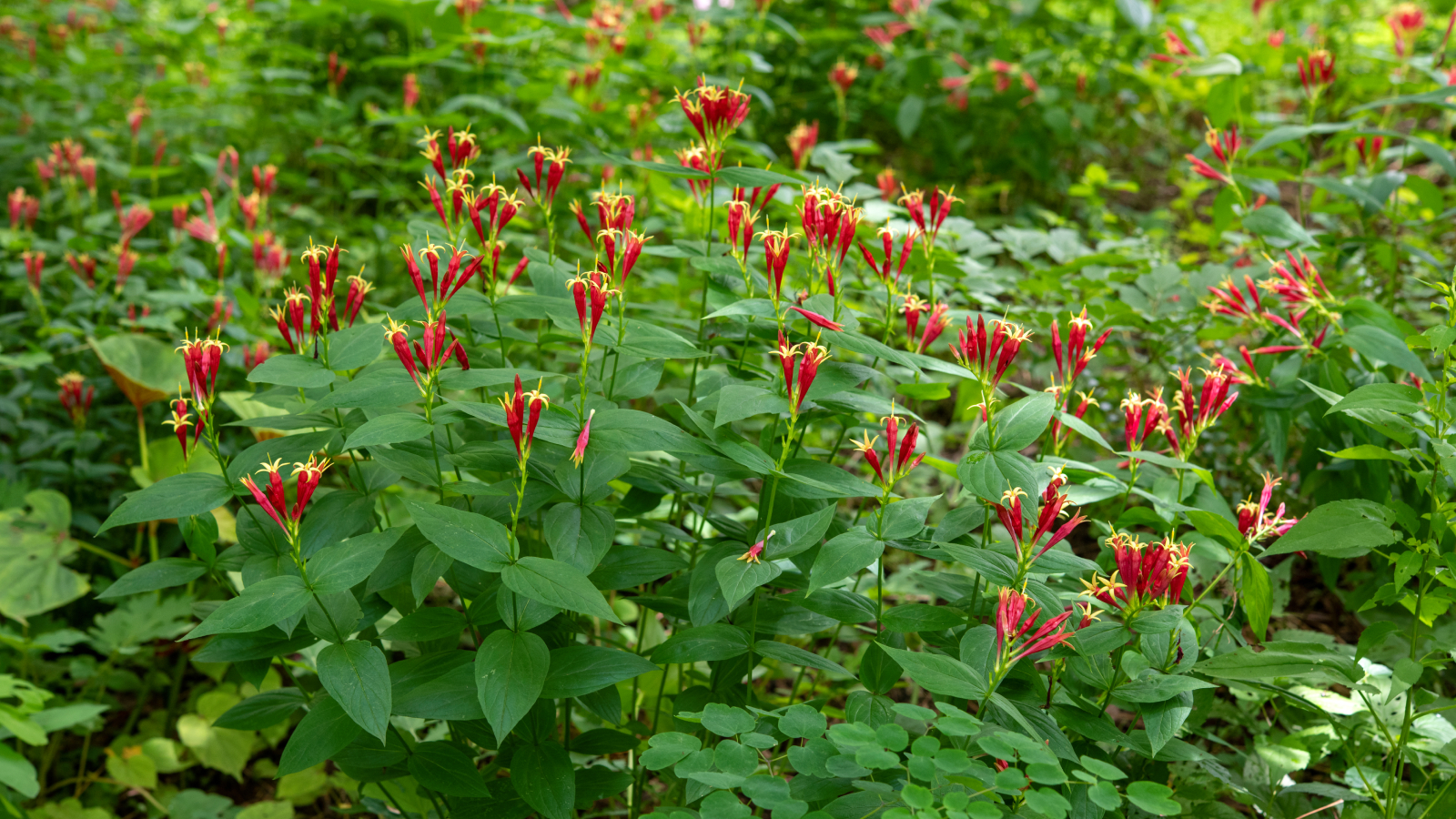
Laura Walters
Quick Facts
Botanical name: Spigelia marilandica
Height: 1-2 feet (30-61 cm)
Spread: 6-18 inches (15-46 cm)
Sun exposure: Part to full shade
Soil requirements: Moist, fertile, slightly acidic
Hardiness zones: 5-9
When to plant: Spring
Bloom time: Late spring, early summer
If you're looking for a long-living perennial with showstopping blooms and tropical flair, try growing Indian pink (Spigelia marilandica). This exotic-looking native plant is hardy in USDA growing zones 5 through 9 and found across most areas of the southeastern United States. From as far north as New Jersey and as far west as Texas, you’ll find wild Indian pink plants. They also grow wild in many areas of the Florida panhandle.
Despite its wide-ranging native habitat, this stunning plant is threatened in many areas. This is due mainly to indiscriminate harvesting by overzealous gardeners. Spigelia is easy to grow, but if you have a hankering to add one of these plants to your garden, be a good sport and leave wild Indian pink plants in their natural habitat. Instead, purchase plants from a greenhouse or nursery that specializes in native flowers.
If you're interested in growing this native beauty in your garden, keep reading to learn all about how to plant and care for Indian pink plants.
What Is Indian Pink?
Indian pink is also known as spigelia or pinkroot, however the origin of its common name remains a mystery since no part of the plant is pink in color. However, it is a clump-forming perennial that reaches heights of 12 to 18 inches (31-46 cm). Pinkroot’s emerald-green foliage provides delightful contrast to the vivid red flowers, which appear in late spring and early summer. You can extend your plant’s bloom time by deadheading faded flowers, which we’ll discuss later.
Indian pink blooms make a glorious addition to cut flower gardens as well as pollinator gardens. Their flared tubular flowers that hummingbirds adore are made even more interesting by their bright yellow interiors that form a star when blooms open. The shiny, dark green, arrow shaped leaves of Indian pink plants remain attractive even after blooms fade.
Indian pink plants are terrific for low light areas of the garden, too, which is a bonus since shade-loving flowers are often hard to find. This plant is a clump-forming perennial with no danger of spreading and taking over your garden, unlike other types of aggressive native plants.
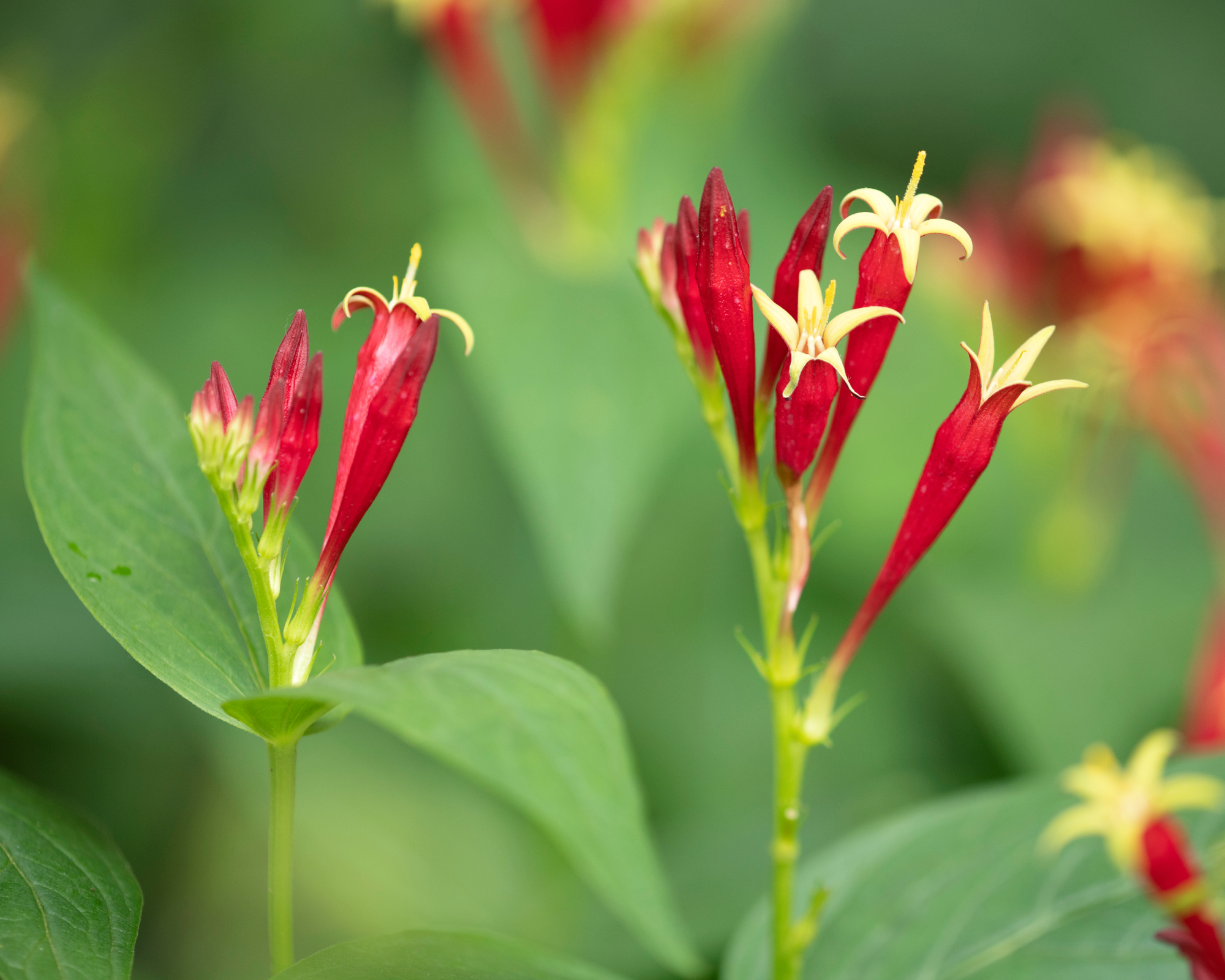
All parts of the Indian pink plant are toxic, making it a deer-resistant perennial even the greediest grazers won’t touch. The plant contains a harmful alkaloid which is most concentrated in the root system. Even so, Native Americans used to harvest the roots to treat intestinal worms and traded it as a medicinal plant with early settlers.
Sign up for the Gardening Know How newsletter today and receive a free copy of our e-book "How to Grow Delicious Tomatoes".
Indian Pink Care
Indian pink plants are fairly unfussy regarding their growing conditions. Once established, plants get along just fine with very little attention. That said, these natives don’t compete well with other more aggressive growers.
Light
Spigelia grows best in partial shade or full shade. It does not do well in full sunlight. In nature, Indian pink is found in shaded woods and at the forest’s edge so it thrives in similar light conditions.
Although this plant tolerates full shade, if you grow it in light that is too low, it will become leggy and less attractive. Give your Indian pink plant a few hours of sunlight each day for the best results.
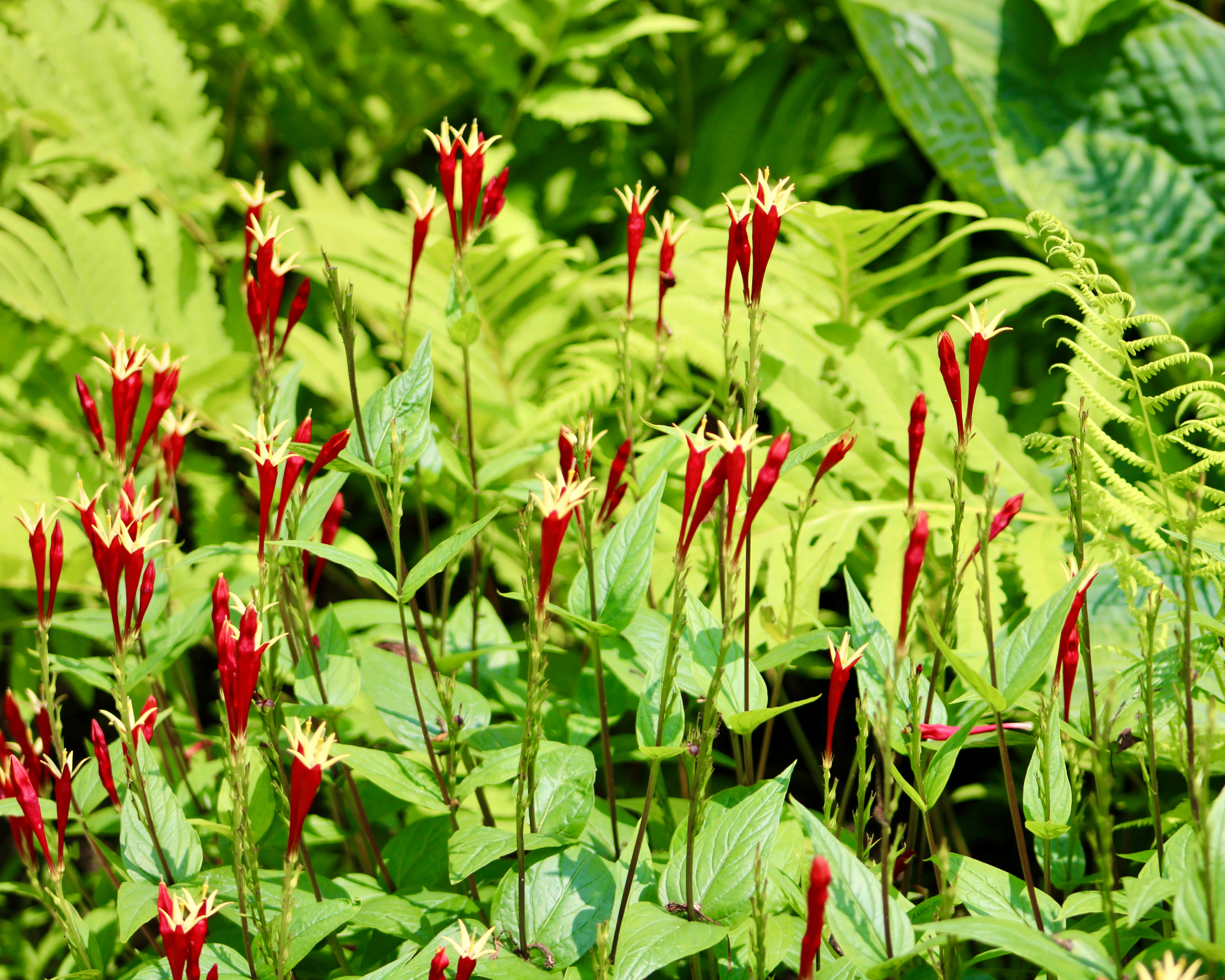
Water
An Indian pink plant requires a moderate amount of water, though they also thrive in moist soil. Plan to water your spigelia once a week with an inch (2.5 cm) of water depending upon weather conditions.
Although the plant benefits from regular irrigation, it is tough enough to withstand periods of drought. However, Indian pink plants grown in sunnier areas require more water than plants grown in partial shade.
Temperature & Humidity
Indian pink plants like temperatures between 60-70 F (15-21 C) with moderate to high humidity during the growing season. They are hardy to USDA zones 5 through 9, however, so they can survive winter temperatures as low as -20 F (-29 C).
Soil
Since Indian pink is a woodland plant, it thrives in rich, moist, yet well-draining soil. It prefers a slightly acidic to neutral soil pH.
To create the ideal growing conditions for your spigelia, dig an inch or two (2.5-5 cm) of compost or well-rotted manure into the soil before planting. This will provide your plant with a rich growing medium that holds water well without becoming too soggy.
Fertilizer
Spigelia appreciates a balanced fertilizer such as a 10-10-10 every four to six weeks during the growing season.
Like most woodland plants, spigelia performs best in slightly acidic soil, so your plant will appreciate occasional feeding with a fertilizer for acid-loving plants. Use a fertilizer made for rhododendrons, camellias, or azaleas to make soil more acidic around your Indian pink plants.
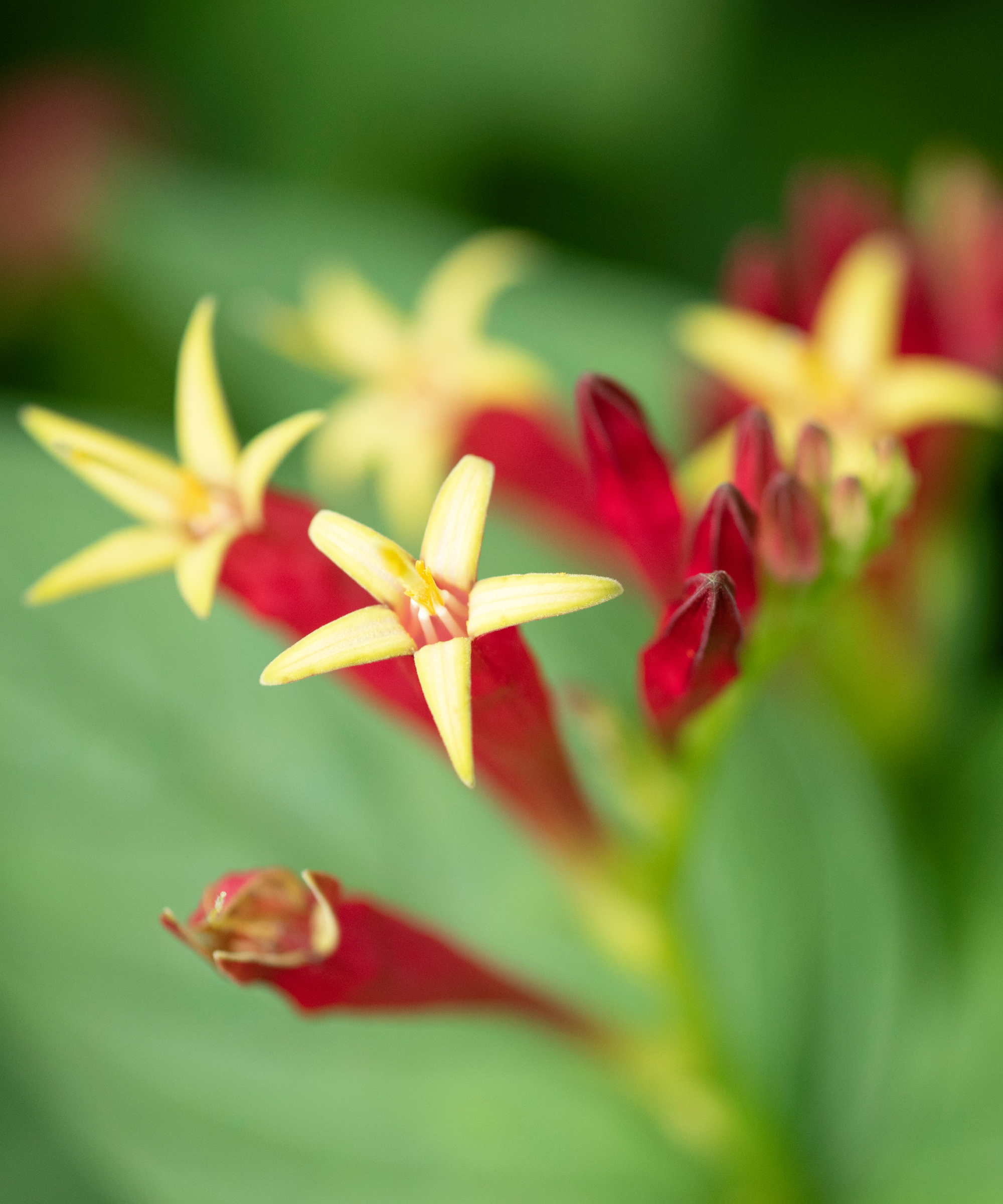
Problems, Pests & Diseases
Spigelia has few pest and disease issues. Aphids, mealy bugs, and spider mites can attack plants. But the best control method is prevention. Provide your plant with the proper care to keep it healthy or try a homemade insecticidal soap spray to combat large infestations.
Overwatering can also result in fungal diseases like root rot or leaf spot, so don’t give your Indian pink plants more than the recommended amount of water.
Pruning
Deadheading flowers is the main type of pruning you need to do on Indian pink plants. Once flowers are spent, pinch off the faded blooms to help make way for more flowers. This will keep your spigelia blooming longer and your plant looking tidy.
Otherwise you only need to prune plants if you like a neat look for winter. Prune back dead stems at the end of the growing season in fall or early winter to clean up plants. Or you can leave the dead stems to help house pollinators over winter.
Propagation
Indian pink is easy to propagate once the plant is well established, about three years after planting.
Propagate plants by taking cuttings in early spring or by planting seeds you collect from ripe seed capsules in summer. Plant the seeds immediately or save them and sow seeds the following spring. You can also propagate spigelia via root divisions in spring.
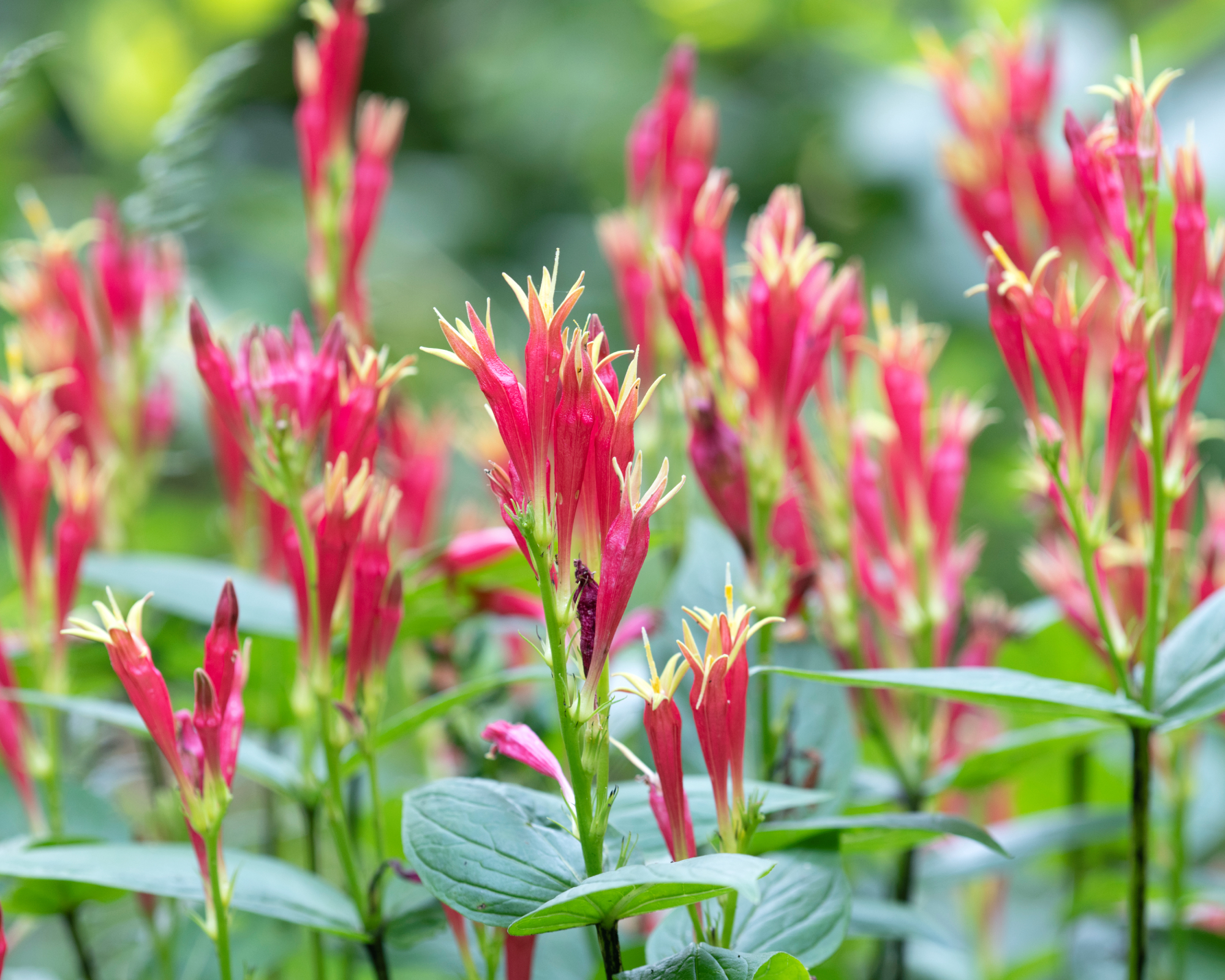
Repotting
Repot container-grown spigelia every two to three years. Select a pot that is larger than the current container and has adequate drainage holes. Use a well-draining, fertile potting mix. Fertilize immediately and keep soil consistently moist throughout the growing season.
Indian Pink Varieties
Although Indian pink is becoming more popular amongst growers, there aren’t too many varieties available in stores. ‘Ragin Cajun’ is a newer cultivar that sports orange blooms and ‘Little Redhead’ is a beautiful cultivar with classic red blooms and deep green, shiny foliage.
It’s available to buy now in the Gardening Know How Shop, along with lots of other unique and hard-to-find varieties you won’t see in most nurseries or big box stores.
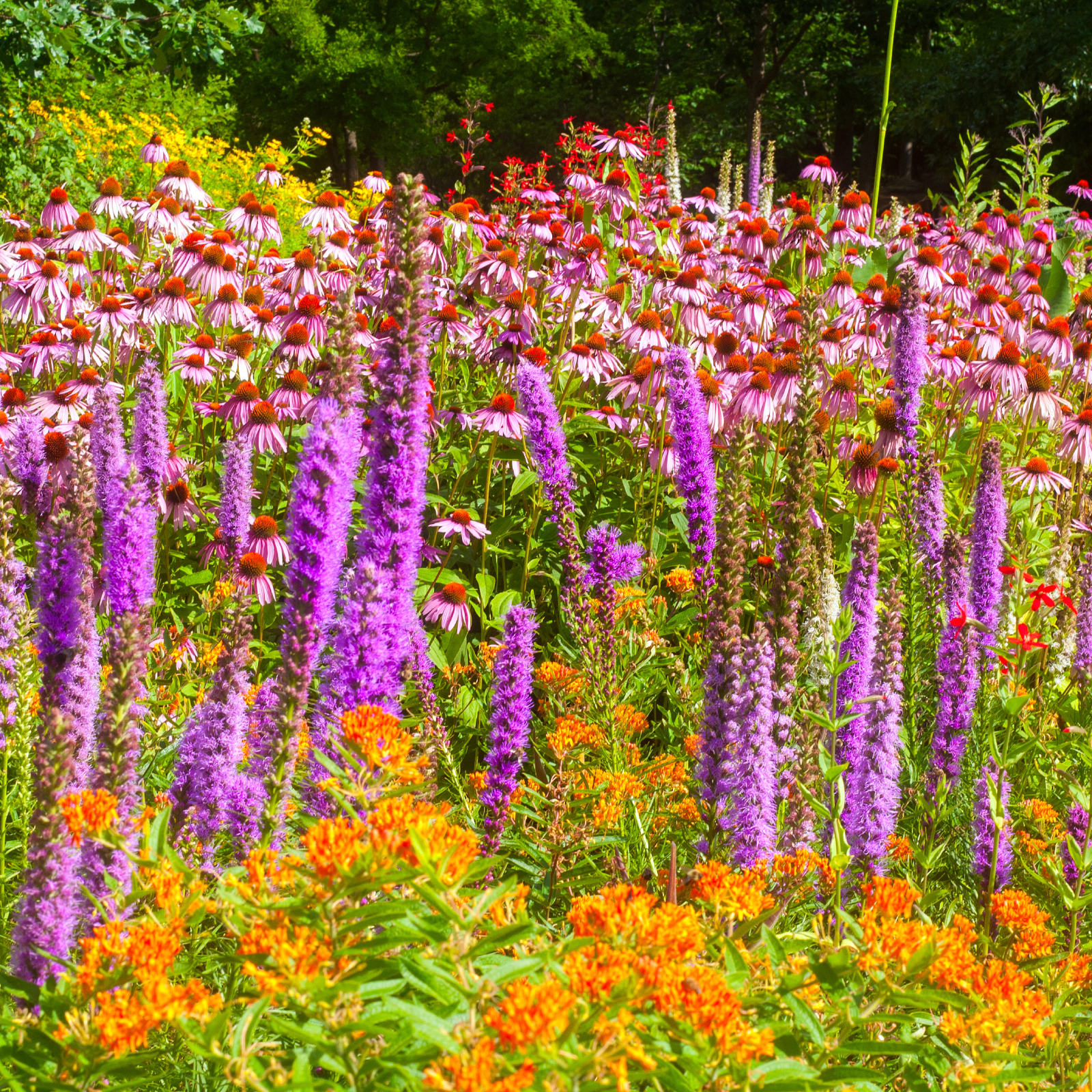
Discover unique native plants that will please pollinators and gardeners alike! Peruse our experts' top picks today in the Gardening Know How Shop.
Frequently Asked Questions
Do Indian pinks spread?
Indian pink plants do not readily spread. It is a clump-forming perennial with an erect habit.
Will Indian Pink rebloom?
Deadheading faded flowers will encourage Indian pink plants to rebloom. Pinch off spent flowers to help prolong blooming.
This article features products available from third party vendors on the Gardening Know How Shop. Keep in mind that our plant inventory is limited—so if you’re thinking of purchasing, don’t wait!

A Credentialed Garden Writer, Mary H. Dyer was with Gardening Know How in the very beginning, publishing articles as early as 2007.
- Laura WaltersContent Editor


